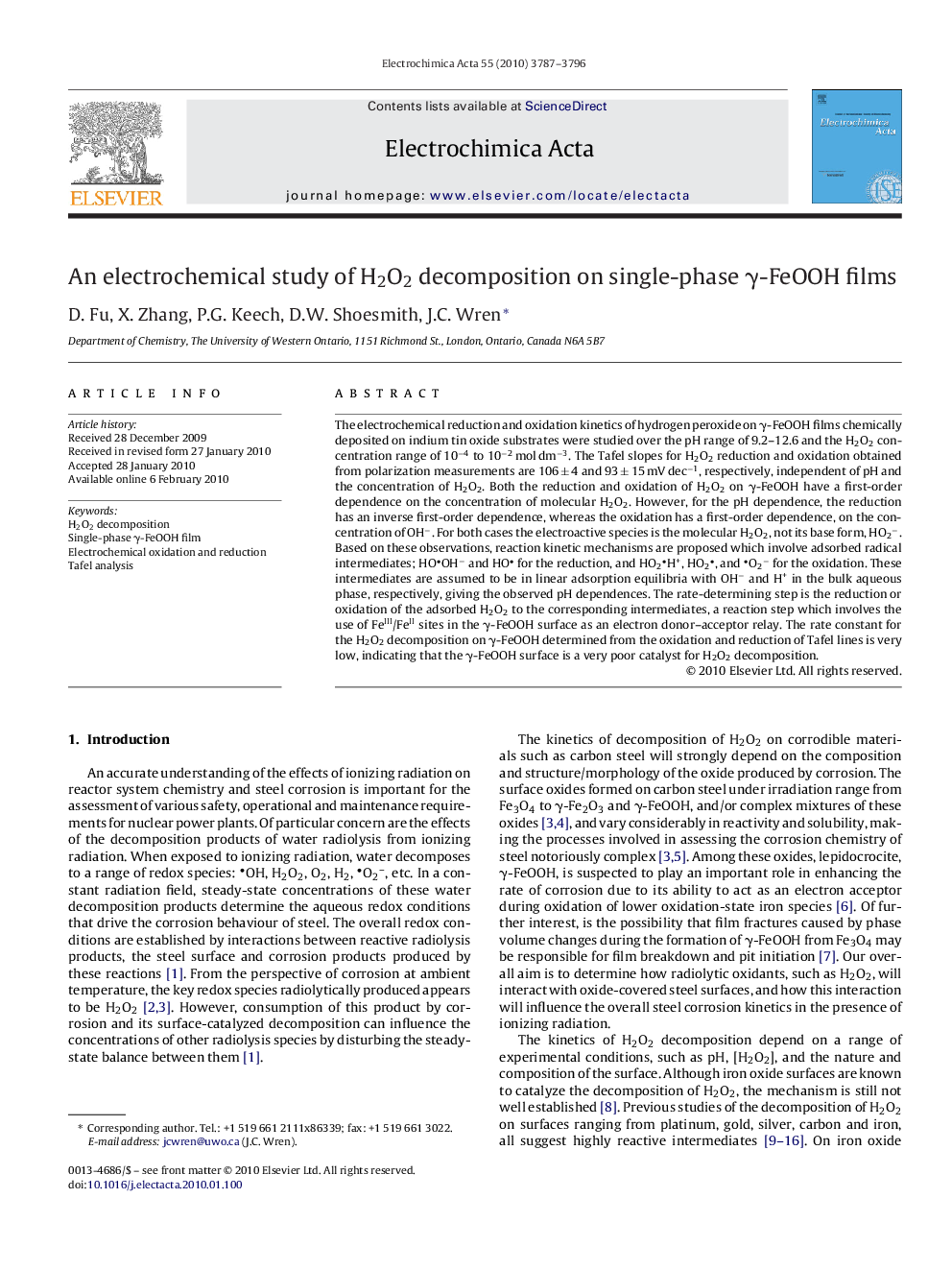| کد مقاله | کد نشریه | سال انتشار | مقاله انگلیسی | نسخه تمام متن |
|---|---|---|---|---|
| 192826 | 459752 | 2010 | 10 صفحه PDF | دانلود رایگان |

The electrochemical reduction and oxidation kinetics of hydrogen peroxide on γ-FeOOH films chemically deposited on indium tin oxide substrates were studied over the pH range of 9.2–12.6 and the H2O2 concentration range of 10−4 to 10−2 mol dm−3. The Tafel slopes for H2O2 reduction and oxidation obtained from polarization measurements are 106 ± 4 and 93 ± 15 mV dec−1, respectively, independent of pH and the concentration of H2O2. Both the reduction and oxidation of H2O2 on γ-FeOOH have a first-order dependence on the concentration of molecular H2O2. However, for the pH dependence, the reduction has an inverse first-order dependence, whereas the oxidation has a first-order dependence, on the concentration of OH−. For both cases the electroactive species is the molecular H2O2, not its base form, HO2−. Based on these observations, reaction kinetic mechanisms are proposed which involve adsorbed radical intermediates; HOOH− and HO for the reduction, and HO2H+, HO2, and O2− for the oxidation. These intermediates are assumed to be in linear adsorption equilibria with OH− and H+ in the bulk aqueous phase, respectively, giving the observed pH dependences. The rate-determining step is the reduction or oxidation of the adsorbed H2O2 to the corresponding intermediates, a reaction step which involves the use of FeIII/FeII sites in the γ-FeOOH surface as an electron donor–acceptor relay. The rate constant for the H2O2 decomposition on γ-FeOOH determined from the oxidation and reduction of Tafel lines is very low, indicating that the γ-FeOOH surface is a very poor catalyst for H2O2 decomposition.
Journal: Electrochimica Acta - Volume 55, Issue 11, 15 April 2010, Pages 3787–3796